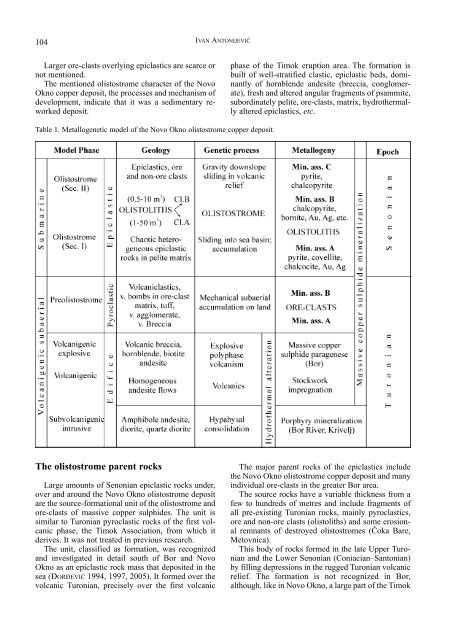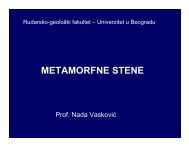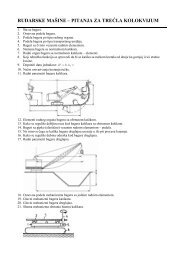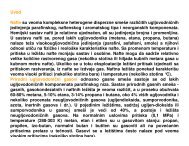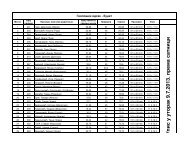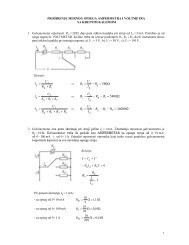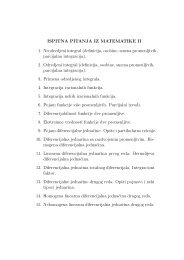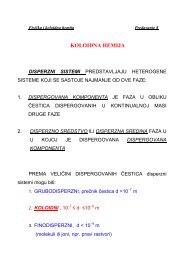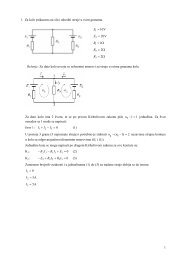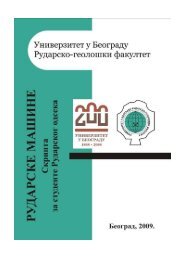KÑига LXXII
KÑига LXXII
KÑига LXXII
You also want an ePaper? Increase the reach of your titles
YUMPU automatically turns print PDFs into web optimized ePapers that Google loves.
104<br />
IVAN ANTONIJEVIĆ<br />
Larger ore-clasts overlying epiclastics are scarce or<br />
not mentioned.<br />
The mentioned olistostrome character of the Novo<br />
Okno copper deposit, the processes and mechanism of<br />
development, indicate that it was a sedimentary reworked<br />
deposit.<br />
phase of the Timok eruption area. The formation is<br />
built of well-stratified clastic, epiclastic beds, dominantly<br />
of hornblende andesite (breccia, conglomerate),<br />
fresh and altered angular fragments of psammite,<br />
subordinately pelite, ore-clasts, matrix, hydrothermally<br />
altered epiclastics, etc.<br />
Table 1. Metallogenetic model of the Novo Okno olistostrome copper deposit.<br />
The olistostrome parent rocks<br />
Large amounts of Senonian epiclastic rocks under,<br />
over and around the Novo Okno olistostrome deposit<br />
are the source-formational unit of the olistostrome and<br />
ore-clasts of massive copper sulphides. The unit is<br />
similar to Turonian pyroclastic rocks of the first volcanic<br />
phase, the Timok Association, from which it<br />
derives. It was not treated in previous research.<br />
The unit, classified as formation, was recognized<br />
and investigated in detail south of Bor and Novo<br />
Okno as an epiclastic rock mass that deposited in the<br />
sea (ĐORĐEVIĆ 1994, 1997, 2005). It formed over the<br />
volcanic Turonian, precisely over the first volcanic<br />
The major parent rocks of the epiclastics include<br />
the Novo Okno olistostrome copper deposit and many<br />
individual ore-clasts in the greater Bor area.<br />
The source rocks have a variable thickness from a<br />
few to hundreds of metres and include fragments of<br />
all pre-existing Turonian rocks, mainly pyroclastics,<br />
ore and non-ore clasts (olistoliths) and some erosional<br />
remnants of destroyed olistostromes (Čoka Bare,<br />
Metovnica).<br />
This body of rocks formed in the late Upper Turonian<br />
and the Lower Senonian (Coniacian–Santonian)<br />
by filling depressions in the rugged Turonian volcanic<br />
relief. The formation is not recognized in Bor,<br />
although, like in Novo Okno, a large part of the Timok


